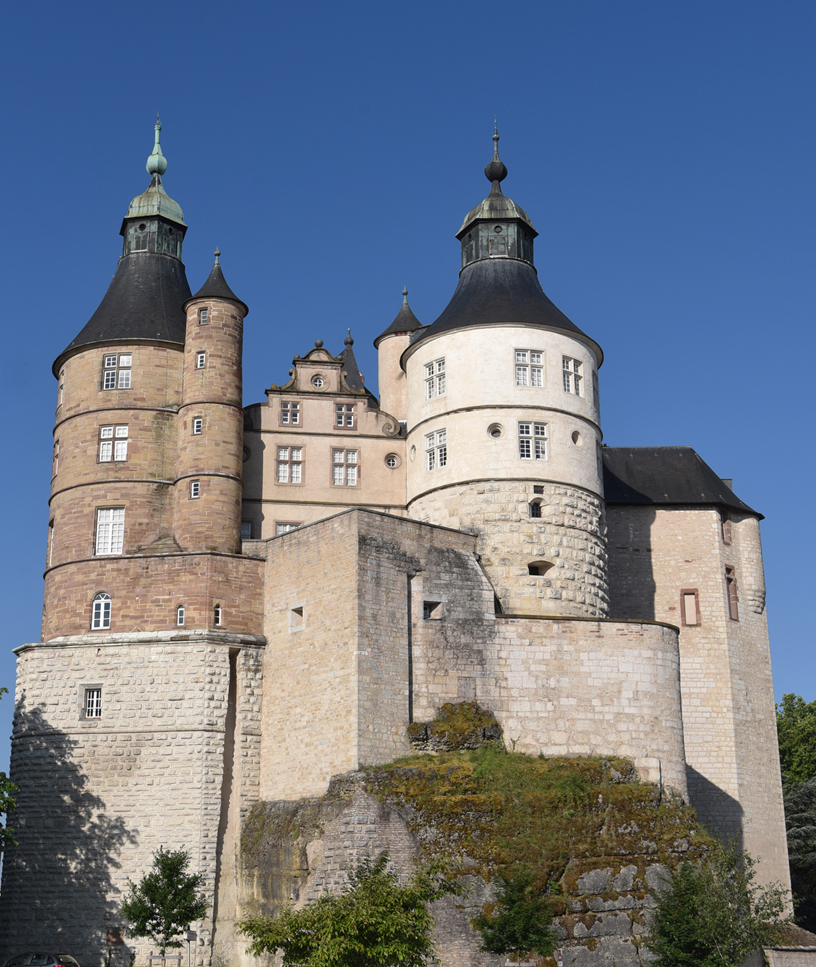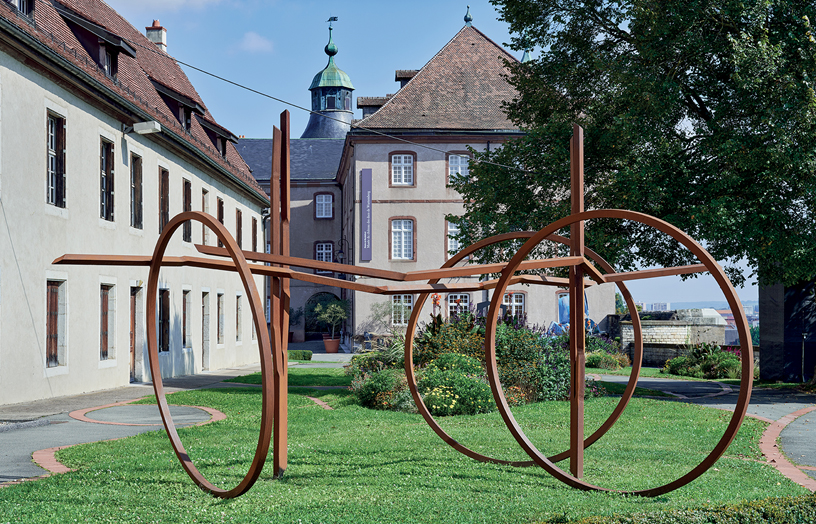Montbéliard

Shaped by a singular history, the castle of Montbéliard stands on a rocky spur located at the confluence of two rivers, the Allan and the Lizaine. Its many defensive devices and the numerous buildings that make it up represent the successive occupations by the powerful lords who dominated the surrounding land and people over the centuries.
Although the earliest mention of a castle dates back to the dawn of the year 1000, a castle and a church were erected from the 12th century onwards by the Mousson and Montfaucon families. In 1407, the marriage of Eberhardt IV of Wurtemberg to Henriette d’Orbe-Montfaucon sealed the fate of the territory for almost four hundred years, which became a French-speaking Germanic principality, enclosed between foreign possessions with antagonistic strategic and religious ambitions.
At the end of the 16th century, the brilliant reign of Frederick the Ist represented a turning point in the history of the castle and the town. As an enlightened Renaissance prince, he promoted the education of his subjects, encouraged economy and agriculture, made Lutheranism the official religion and radically transformed the urban landscape. He was responsible for the reconstruction of the two towers of the princely residence - the gentlemen’s residence housing the court -, an arsenal, cisterns and a hydraulic machine to supply the castle with water, and the St. Martin’s temple in the heart of the lower town.
In the middle of the 18th century, the main body of the castle, dating from the medieval period, was redesigned and modernized. But the Wurtemberg family abandoned Montbéliard for their pleasure residence in the nearby countryside. Following the final departure of the last reigning duke in 1793, the court’s property and archives were dispersed. The castle site underwent major transformations: the church was dismantled and all the buildings were used as barracks for the military garrison until the First World War.
During the 20th century, the castle gradually returned to its past by becoming a museum, the purpose of which is to exhibit the riches of the region. The collections of botany, palaeontology, archaeology, regional ethnology, fine arts, contemporary art... patiently assembled since the middle of the 19th century, bear witness to a deep attachment to nature and the people who have left their mark on Montbéliard and its region.
Municipality of Montbéliard
www.montbeliard.fr
musees@montbeliard.com
